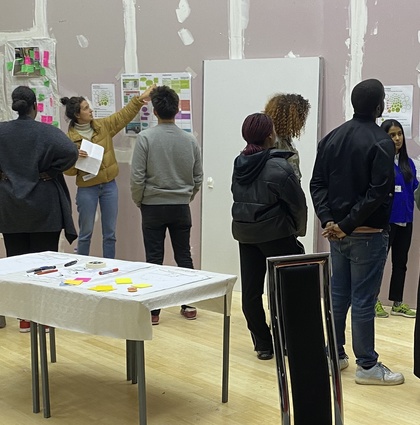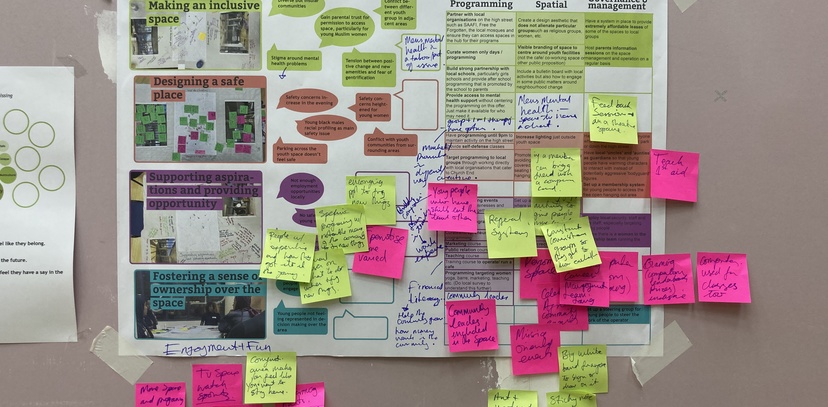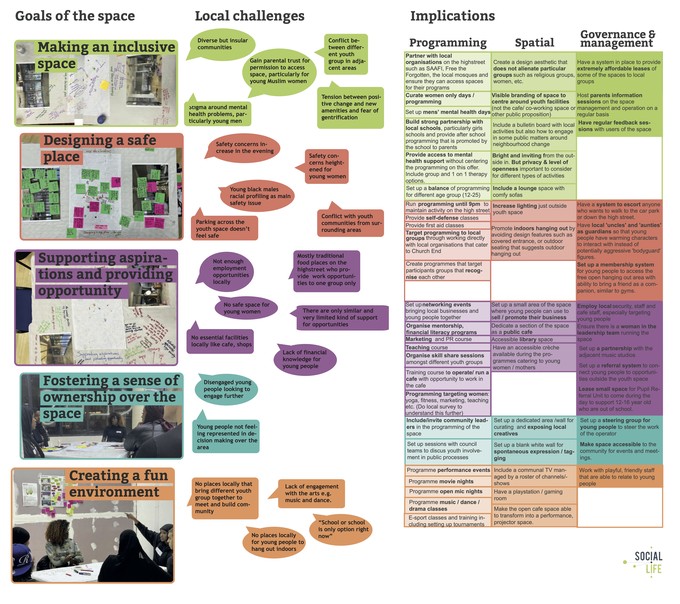

In Brent, working with a group of creative and committed young people from Church End, we have designed a social value framework for a new youth hub. This is part of our wider work to find different ways of articulating outcomes for buildings and the functions located in them that compel (or at least encourage) designers, building operators and service providers to put these outcomes at the centre of their work. This is something people often claim to do but in practice, good intentions often slip.
Our experience is that built environment practitioners aren’t used to working with frameworks like theories of change and logic models. These have become standard for practitioners working in other fields - like children’s services or supporting vulnerable people. Partly this is because factors affecting what happens in places are complicated and can be unpredictable. A legitimate criticism of theories of change is that they can become too linear and don’t flex to accommodate reality. But, our experience working on complex area based projects – like the Woodberry Down regeneration in London - has convinced us that we can co-create theories of change and social value frameworks that are high level enough to be flexible but specific enough to be useful to guide the work of multiple agencies.
In Brent, we wanted to work with local young people to develop a framework that was visual, simple and that could be used easily by the architects, the future operator of the space and by the local authority. Young people from local youth agency United Borders worked alongside the Social Life field team last summer to research how their peers were using local youth spaces, parks, cafes and other local social infrastructure.
Young people told us how they appreciate the diversity, multiculturalism and sense of community in the area around Church End. Safety and the quality of the local environment were seen as problems and there was a general consensus that young people lack places and spaces to socialise and spend time with friends - although there are places that young people use and feel comfortable in. We spent time understanding and mapping these.
The area is home to people from many different backgrounds and working with established community voices and networks is critical – both to understand the area and to think about how to provide a new space that will be trusted by young people and their families.
We convened three workshops in the autumn to explore the overall aims and remit for the new space, to think about use and programming, and, working with ZCD architects, started work on design. Four core themes were agreed:
The social value framework is concise and visual, so it can be displayed on a wall, in leaflets or digitally. Organised by the four themes, it sets out the implications for programming, spatial planning and design and governance. As plans evolve it can be updated to become more tangible and relate to grounded plans and activities.
Ultimately the framework is a benchmark for the future, for different agencies and for the young people who use the space and become involved in its governance. It is a way of keeping the voices of the young people who planned and designed the space and its use in 2022 at the centre of what happens in the future, making the actions of operators and designers accountable to the original intentions.

